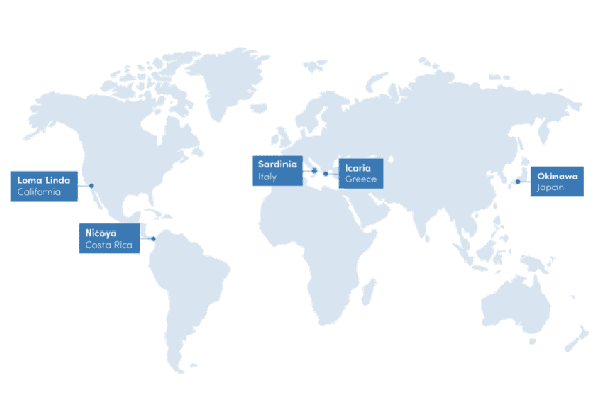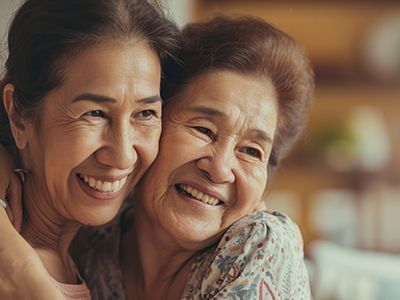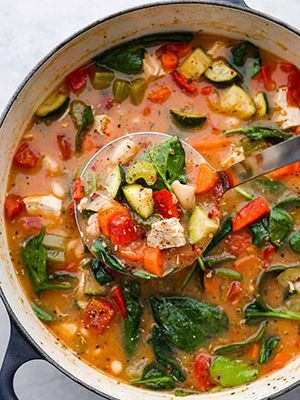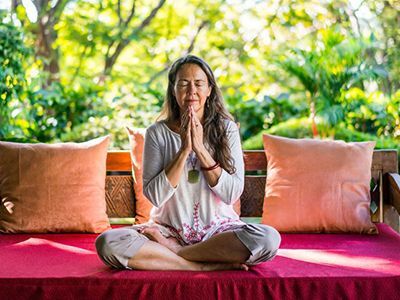Unlocking the Secrets of the Blue Zones: Exploring Longevity and Vitality
authored by Taylor Appel, MSCN, RH (AHG)
The five blue zones have become synonymous with health, but what really makes the populations that live in these areas so healthy? These infamous longevity-producing locations include Sardinia, Italy; Okinawa, Japan; Nicoya, Costa Rica; Icaria, Greece, and Loma Linda, California. People in these areas tend to live to be centenarians, or over one hundred years old, and continue to thrive with vigor. Although the geographical locations of these sites are very spread out, many common factors remain between them – from dietary and lifestyle choices, to community connection and spiritual practices. We can learn so much from the “blue zones” of the world to truly understand what cultivates vitality.
What truly makes a “blue zone” an area that fosters longevity? To answer this, we’ll take a look at the origins of the term “blue zone”.

What is a “Blue Zone”?
Did you know that the term “blue zone” did not even exist before 2005? Dan Buettner, a National Geographic Fellow and New York Times bestselling author, is responsible for coining this term and giving it the reputation we see today. Buettner was part of a team on a global journey to five regions of the world that were chosen by National Geographic. These specific areas were selected based on findings that individuals in these places tend to live longer than in other parts of their respective regions of the world. Buettner and the team were on a mission to understand how the lifestyle and dietary choices of these communities translated to health.
Upon his return, Buettner was vocal about wellness practices observed during the team’s explorations. Interestingly, he dubbed these areas “blue zones” simply because a blue pen was used to mark one of the maps used on the expedition. There are plenty of other “blue zone” communities that fall under the criteria described below, but these were the ones chosen to be marketed to the world as some of the top healthiest places to live.
Characteristics of a “Blue Zone”
The “blue zones” are known to have many commonalities, including:

- Emphasis on community and relationships
- Regular movement and play
- Having a sense of purpose
- Prioritizing rest and relaxation
- Eating until 80% full, rather than overstuffing oneself
- Consuming a seasonal diet of whole-foods, low in processed products, with only small amounts of wine/alcohol
- Mostly plant-based meals, many containing legumes
In addition, many people living in these areas don’t actively try to be healthy, rather they are simply living in alignment with themselves and nature. They live each day to the fullest, they laugh, they sing, they share food, they move their bodies, and they take time to rest and reset -- every single day. The lessons we can learn from those thriving in areas identified as “blue zones” are endless, even if the common attributes identified and publicized remain up for discussion.
Emphasizing a Plant-Slanted Diet
In addition to lifestyle habits observed in "blue zones," such as expressing gratitude, spending time outdoors, and prioritizing rest, the dietary patterns of these regions have been extensively documented. Buettner emphasizes a "plant-slanted" approach to eating in these areas, with a focus on fruits, vegetables, whole grains, and minimal meat consumption, treating it more as a complement rather than a main component of meals.

However, it's important to recognize that while Buettner advocates for a predominantly plant-based diet in "blue zones," he acknowledges that meat is still a part of their culinary landscape. While there may be debates surrounding the exact dietary habits of these regions, it's clear that people who live in the “blue zones” predominantly rely on whole, minimally processed foods from both plant and animal sources.
Understanding the cultural context in which these foods are enjoyed is crucial. In "blue zones," meat consumption is likely more moderate and sourced locally, emphasizing quality over quantity. Those preparing meals are often directly involved in raising or sourcing their food, fostering a deeper connection to the natural cycles of life, both plant and animal.
Across "blue zones," dietary patterns emphasize home-cooked meals using fresh, whole ingredients, shared during family gatherings or communal feasts, seen as vital for nourishment. In addition to “plant-slanted” ingredients and dishes, other staples include aromatic meat and vegetable stews, whole-roasted fish and animals, raw dairy, and nutrient-rich organ meats, all reflecting a commitment to quality.
The big moral of the story seems to be that simple, whole food-based meals, ideally sourced primarily from local farms, are the true foundation of a “blue zone” diet. The key takeaway from studying "blue zones" is not just their dietary patterns, but the profound sense of community and connection to the natural world that underpins their way of life. If we follow their example, it’s best to prioritize organic, seasonal, and locally sourced foods as a fundamental aspect of fostering well-being and preserving traditional dietary wisdom.
Discovering Deeper Wisdom from the “Blue Zones"
In addition to dietary wisdom, the "blue zones" offer profound insights into emotional and spiritual well-being as key factors in promoting longevity. A prevailing theme in these regions is the cultivation of a low-stress lifestyle, prioritizing the needs of both the mind and body on a daily basis.
In today's fast-paced world, stress has become a pervasive issue, with detrimental effects on mental and physical health. Research indicates that mental well-being significantly influences our overall outlook and can profoundly impact physical health. Chronic stress disrupts immune function, leaving us vulnerable to illness and internal imbalances. Moreover, it affects how we process both emotions and nutrients.
To nurture mental health and cultivate resilience to stress, consider implementing the following practices:

- Keep a Gratitude Journal: Try beginning your days by writing down three things you are grateful for and then adding another three items at the end of your day, spending time to reflect on your list. This can be a powerful tool, especially if you struggle with helplessness, depression, or anxiety.
- Consume Adaptogenic Herbs: Integrate adaptogenic botanicals into your daily routine to build your resilience to stress and reduce its impact on your well-being. Ashwagandha, Schisandra, and Licorice are a few of my favorites -- but always discuss with your healthcare team before starting new herbal medicines.
- Have a Meditation or Prayer Practice: A simple practice of mindfulness is to close your eyes and allow yourself to relax by focusing on your breath. Consider also developing a daily prayer practice that resonates with you. This can range from using religious texts or songs, or simply sitting with your intentions or aspirations.
- Play More Often: It’s no secret that happy people tend to live longer. Rediscovering what sparks joy into your soul can also reignite the will and resilience to live a long, happy life. Try and tap into your child-like pleasures and feed those desires with a regular dose of play a few times per week, or more!
- Slow Down: We tend to push our body’s physical and mental limits regularly, but if we can integrate only one lesson from the “blue zones”, it should be to slow down and be more mindful.
Beyond Diet: Embracing the True Essence of the Blue Zones
The essence of the "blue zones" extends far beyond dietary choices, encapsulating a profound harmony with oneself and nature as the cornerstone of optimal health. Rather than prescribing a one-size-fits-all approach to longevity, we can adapt these timeless principles to suit our individual lifestyles and environments.

The true essence of the "blue zones" is to live in alignment with natural rhythms—of the seasons, communities, and individuals. By mindfully integrating the wisdom gleaned from these regions into our modern lives, regardless of our geographical location, we can actively foster longevity and well-being.
For further reading on the Blue Zones, check out our founder, Donnie Yance’s blogs:
Secrets of the Blue Zones: The World’s Hot Spots of Longevity
https://www.donnieyance.com/secrets-of-the-blue-zones/
More on the Blue Zones
https://www.donnieyance.com/more-on-the-blue-zones/
Join the Mederi Center community by signing up for our email list! We send several emails a month with product promotions for patients, practical tips for healthy living, blogs written by our practitioners, information about events, and other news. You can unsubscribe at any time.
Works Consulted
- History of the blue zones. https://www.bluezones.com/about/history/
- The Blue Zones by Dan Buettner. https://danbuettner.com/blue-zones/
- Blue Zones. https://www.ncbi.nlm.nih.gov/pmc/articles/PMC6125071/
- Understanding Traditional and Modern Eating: The TEP10 Framework https://bmcpublichealth.biomedcentral.com/articles/10.1186/s12889-019-7844-4
- Indigenous Peoples' Food Systems: The Many Dimensions of Culture, Diversity and Environment for Nutrition and Health. https://www.fao.org/3/i0370e/i0370e.pdf
- Effects of Mindfulness on Psychological Health: A Review of Empirical Studies. https://www.ncbi.nlm.nih.gov/pmc/articles/PMC3679190/


